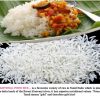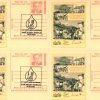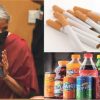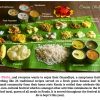Goa is abuzz with excitement as vintage bike and car owners, users, collectors and fans are decking […]
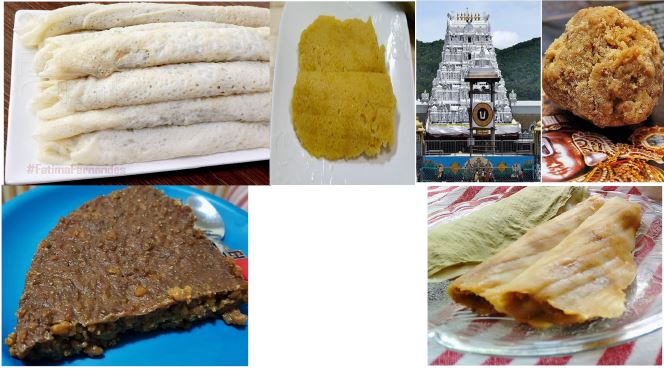
IF IT’S AUGUST IT’S TIME FOR `ALLE BELLE’ IN GOA!
Aug 05- Aug 11 2023, Life & Living August 4, 2023AUGUST SWEETS…alle belle, ponsa muddo, Tirupati temple famous boondi ladoo prasadam, godshe and pattoleo. Many Goan sweets around August festivals revolve around basic local ingredients… coconut, jaggery, rice flour and lentil crumble or pastes, many of the sweets are steam cooked in fresh turmeric leaf making them wholesome and nutricious
By Tara Narayan
THE world may be going from bad to worse but there’s a bit of sweetness left in golden Goa. Rain-filled July is over with and if it’s August 1 someone or another will send me these velvety soft Goan pancakes or French-styled crepes called “alle belle.” My friends Virginia and Anna Fernandes sent me some alle belle saying coconuts are cheap now, go buy! It’s true. Come August and price of coconuts come down a little and these days you may see coconuts taking pride of place everywhere in the market.
How much? I asked a pavement vendor and she replied Rs25 for a medium sized coconut, very buyable! August is when Goans buy coconuts in plenty along with the dark triangular palm jaggery which may or may not have a buzz of flies taking pot shots at it with vendors trying to shoo them away at the Mapusa market, quite an amusing scene. The Catholic homes will be making alle belle (also called “mannke”) and other sweets while Hindu homes have their own sweets like manganne – monsoon time sweets will feature freshly grated coconut and grated palm jaggery in a myriad ways, either stuffed in delicate pancakes or in turmeric leaf steamed pattoleo. There are a host of other sweets too featuring primarily coconut choon (gratings), palm jaggery and rice flour or soaked chana/moong crumble.
I’ve always liked that Goa is not a dairy state, it’s more a coconut state and coconuts are the kalpa variksha fruit for all seasons. Coconuts are prima donnas in Goan cuisine Catholic or Hindu and frankly, I have a soft corner for the coconut and all the traditional lore attached to it…you know it’s the most auspicious fruit for Hindus and no religious puja is complete without coconuts. Down south Goa they believe the coconut signified the ego and when you break a coconut before Lord Subramaniam it’s akin to saying here, my lord, I’m handing over my ego to you so that you may crush it like I’ve broken so many coconuts before you…something like that. Good idea!
In any case as far as I can remember most temples I visited in the old days had nothing but a prasadam of coconut kernel and a bit of “gud” to give you, maybe some golden gram thrown in. Nowadays of course for some reason nobody offers you coconut bits (which I thought were so agreeable) and I don’t go to temples so often, preferring to be minimal in my praying rather than maximum! But all this is to say it is coconut and palm jaggery season in Goa come August and both are prima donna stars in the kitchen.
TO come to alle belle they remind me of popiah pancakes in Malaysia and sometimes the pancakes would be refreshing green with the juice of the screwpine or daun pandanus infused in the batter…popiah as part of kueh kueh (a melange of local native sweet something) could be sweet with coconut choon (a mix of freshly grated milky coconut and grated palm jaggery) wrapped in it, or it could also be savoury. May spike with bit cardamom or nutmeg. Popiah or poh pia basah are usually soft pancakes a la Goan alle belle. I suppose if you feel rich you may also stuff in the choon itsy bitsy caju. Alle belle is usually cream coloured but nowadays they may also come in a razzamatazz of rainbow colors…please, spare me those. Plain is superior!
It’s August in Goa with another round of festivals, some families still get together to prepare “shirodio, aatol, patolleo or kholle, ponsa muddo” – life is all about starting the day with “maddache god” and “nallachi cathli.” Coconut and jaggery marry extremely well together in relationships of culinary and nutritional excellence if I may say so!
TALKING of prasadam earlier I’m reminded of this bit up on social media recently. The Tirupati ladoo, remember it? It’s a much loved ladoo and once upon a time was the largest laddoo prepared in a temple town…there’s something divine about this ladoo with its wee aroma of camphor and I love the Tirupati ladoo. Well, this is just to say the famous Tirupati boondi ladoo is celebrated its 322th birthday on August 2, 2023. The story goes that the ladoo as prasadam or naivedyam was first offered to the Lord Tirumala Srinivasa some 322 years ago and it became a tradition from then onwards.
So famous is the ladoo that I think now one may even order it online after offering a puja online – the puja video sent to you as proof! Needless to say several ladoo are purchased after the mandatory free prasadam of one only these distributed to kith and kin by way blessings from the Lord Tirupati who is Lord Venkateswara, also Lord Balaji, the Lord of seven hills…etcetera. The deity is an avatar of Lord Vishnu of course.
ENOUGH ladoo talk! Seeing how these days I’m discovering or re-discovering the iconic New Age author Dr Deepak Chopra, I hunted for one or two of his books which I’d purchased long ago and couldn’t find them! But I found a far more interesting vintage copy of “Lifestyle and Health” by Dr HK Chopra with forwards by Dr Deepak Chopra, Dr Naresh Trehan, Dr SK Sama, Dr SK Parashar, Dr Ashok Seth…this is a real find and a ready reckoner, “a mind-body capsule” to quote. If you remember Dr HK Chopra is an eminent cardiologist of international repute and yes, he explains Ayurveda very easily.
So I’ve been gleaning his book anew and it registered anew that honey is a super food like no other. Honey is very super food. Ayurveda is all for honey and it is particularly prescribed for heart patients like me. Says interventional cardiologist of Delhi’s Medanta MoolchandHeart Institute Dr HK Chopra, “The muscle of the heart is working continuously and needs glucose in order to make up the energy expended. When a very small quantity of glucose (0.1 per cent) is added to the physiological saline in which an isolated heart is immersed, the heart will continue working outside the body for four days…”
Well, that’s some observation and he says honey is beneficial for the heart because it contains plenty of easily assimilated glucose, “It has been noted that it has an invaluable effect on the weakened muscle of the heart in various types of cardiac disease. Even diabetics can take honey, since cardiac activity is improved by the injection of fructose or honey into the organism. In all cases where a cure depends on the activity of the heart, honey should not be forgotten, so that the heart will not only be stimulated when given digitalis, but also receive nutrition. Honey causes the veins to expand and improves coronary circulation…”
The entire chapter is dedicated to “Honey:The Elixir of Life” and I’m reproducing some of it here in a box elsewhere, take a look, but you need to read the book too if you seeking better health. I’ve been ignoring a bottle of “Waitemata Manuka Blend” honey on my dining table and I’m going back to it from today after reading what Dr HK Chopra has to say about honey’s magical properties! My sister from New Zealand visiting Mumbai earlier this year had gifted me the bottle and it has been rusticating for god alone knows what reason; once upon a time I used to love honey dribbled onto hot buttered toast but all that I gave up…maybe if the rains return I’ll get some of the very nice bread I sometimes get from Padaria Prazeres in Panaji and indulge one more time on honeyed buttered toast before the end!
Excerpted from `Lifestyle and Health’ by Dr H K Chopra….
HONEY AND THE HEART
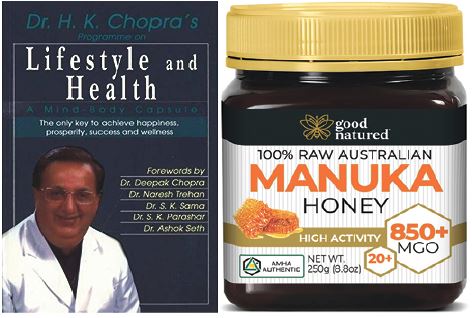
WITH prolonged consumption of honey (50.140, or on an average, 70 grams of honey daily for one or two months), patients with heart trouble feel better, the composition of their blood returns to normal, their haemoglobin level increases, and cardiovascular tonus improves. British researchers have discovered that honey slows the oxidation of `bad’ LDL cholesterol, which is responsible for causing atherosclerosis, or hardening of the arteries. So honey can fight against cholesterol. And he darker the honey, the better, Pure honey taken with food daily (instead of white sugar) reduces cholesterol levels. This is beneficial for old people and those suffering from heart disease, diabetes, high blood pressure and the effects of a stroke. Honey also helps in controlling the blood pressure by its antioxidant property, reducing hardening of the arteries and thereby reducing peripheral vascular resistance.
Make a paste of honey and cinnamon powder, apply on bread or chappati instead of jelly and jam and eat it regularly for breakfast. It reduces the cholesterol in the arteries and reduces the risk of a second heart attack. In America and Canada, various nursing homes have treated patients with honey successfully and have found that the arteries and veins, which lose their flexibility and get clogged due to increasing age, are revitalised. Honey is therefore cardio-protective, a vasoprotective and cholesterol protective. It improves endothelial functions, reduces the risk of micro or macroangiopathies, reduces blood pressure and tones the cardiac muscles.
Note: Traditional medicinal systems such as Ayurveda use honey predominantly as a vehicle for faster absorption of various drugs made of herbal extracts. Secondly, it is also thought to support the treatment of several more specific ailments, particularly those related to respiratory irritations and infections, mouth sores and eye cataracts. It also serves as a general tonic for new born infants, the young and the elderly, convalescents and hard-working farmers.



